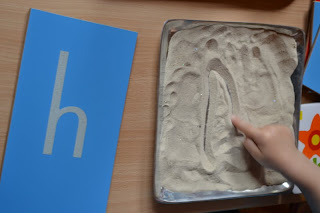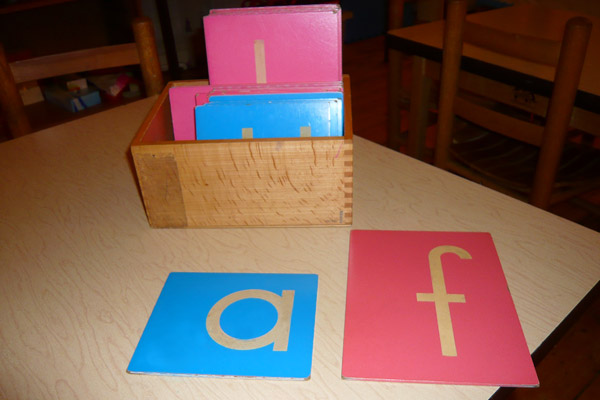The children have started learning to recognise their names since the beginning of the year. We use a very simple method: their name tags on top of their coat hangers ...
.... and the ones they use on our roll call board.
They also do work in their work copies and when asked to do so, they have to retrieve their copy, recognising their names written on the front cover (sorry,I don't have any picture).
The next step is to help them write their names down, which can be very tricky for some. But this is what preschool is all about!! Learning, practising, trying ... I wrote a post right here in the past, explaining how we proceed. Some of the children have very poor penmanship and we let them practise their skills using worksheets, joining dots at first.
I also find that tracing over words does help them a lot too. In the photo below, you can see a child tracing over words related to Autumn time. Though he cannot read yet, he is able to associate the written symbols to a meaning, thanks to the picture placed beside the written word.
Once the children are much more confident at holding their pen and tracing carefully, we move on to the tracing of their names and finally, we completely get rid of the dots. Read the post I mentioned above and you will fully understand what I am talking about.
This year, I have added another step: I have created little booklets for the children to help them practise the letters in their names. (I cut a work copy into 2 to make the little booklets).
Let's take JESSICA for instance.
Jessica will have to start tracing the letter J, using dots ; then she will reproduce the letter all on her own.
The procedure will be repeated for each letter of her name until she is ready to reproduce them all together independently.
The booklet is actually a great way to record how the children are progressing and how much they have achieved so far. The booklet will also be a nice little keepsake at the end of the year.
Of course, everytime we introduce a letter to the child, we will use the sand paper letters and the salt/sand box to teach him the right way to trace the letter.

In a Montessori classroom, the sand/salt box is always used as a stepping stone to many other writing and reading activities. In our preschool, we also use a dry erase board in conjunction with the salt box. It is a very effective way to practise and the children like the idea of using the brush to clean the board. Some people use chalk boards. I personally think that chalk is a bit too messy in a classroom and this is why we use dry erase boards instead.
So, over the weeks to come, this is what we wil be all at in our classroom. And by next June, all the children moving to Primary School should be able to write their names all on their own!!I will of course present the children with several other types of activity to diversify and vary the learning process and make it more interesting. So keep in touch!


